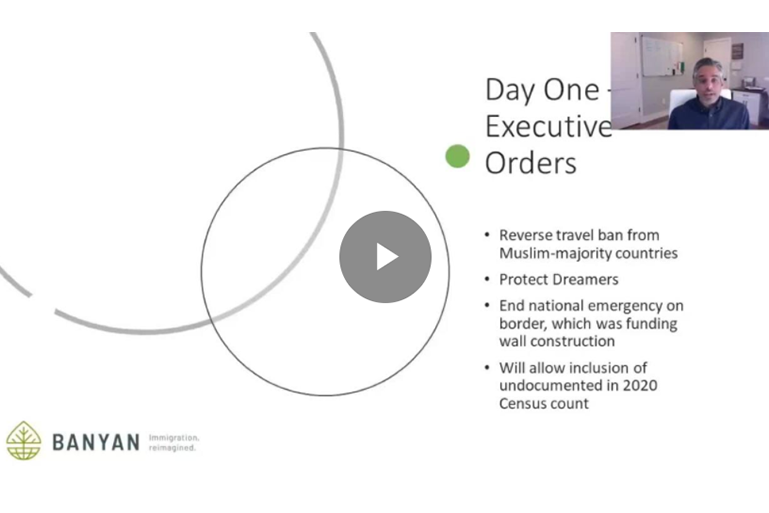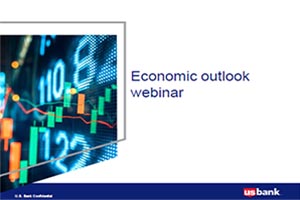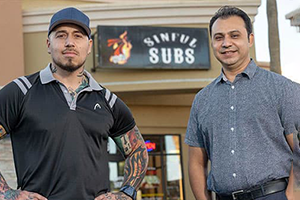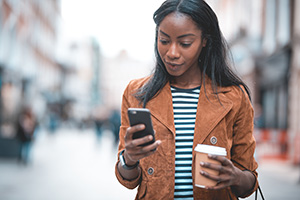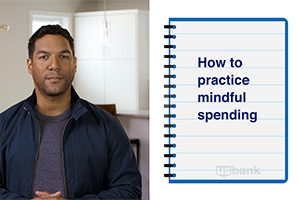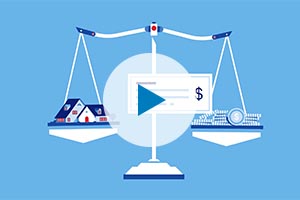Information and tips from a U.S. Bank expert on how to put your payments to good use in the current economy.
The IRS began processing advance payments of the Child Tax Credit in mid-July. But with so much financial uncertainty today, those payments, along with Economic Impact (“stimulus”) payments, might have you thinking about tucking away the money for safekeeping. We provide information about each payment and also asked Robert Schell, U.S. Bank financial industry and regulatory affairs expert, about recommended ways to use the money.
First, here's a brief summary of each payment and where you can go for more information.
What are Economic Impact ("Stimulus") and Child Tax Credits and how can I learn more?
According to the IRS website, Economic Impact Payments are funds to help people during the coronavirus pandemic. The Child Tax Credit is a tax benefit to help families who are raising children. For information and to learn more about who's eligible, we recommend visiting the IRS website for Child Tax Credits and Economic Impact Payment information.
Tips on how to use Economic Impact or Child Tax Credit Payments
Industry and regulatory affairs expert, Robert Schell answers common questions about stimulus checks, and shares his tips and recommendations on how to use these funds.
Should you spend or save these payments?
According to Schell, there is no right or wrong way to spend or save your stimulus check, as it varies on individual or family circumstances. However, it is important to understand the purpose of why the Treasury Department and the Internal Revenue Service (IRS) are distributing these payments and when they’re meant to be used.
“The time for the stimulus is the whole period the economy is being challenged by forced shutdowns and social distancing,” Schell says. “Putting your money in the reserve to cover rainy days is reasonably expected in the near-term but this money is not meant for a long-term, nest-egg kind of savings. Save it for a rainy day, as long as you think that rainy day is coming within this challenging economic horizon.”
Some people will use this money for rent, groceries and other living expenses because they’ve lost work or income. Other people who haven't had a loss of income from this event could take advantage of the extra funds and splurge a bit. That concept can seem odd, especially during such a challenging time, however that spending is intended to stimulate the economy.
“That spending you're doing is someone else's income and helps in putting a roof over their head and so on. Those transactions create a long chain of economic relationships,” explains Schell.
Where should I spend these payments?
Due to limits imposed by shutdowns and social distancing, it can be a challenge to support businesses when so many are closed right now. Schell suggests spending what you can where you’re able. As individuals and businesses have all adjusted to pandemic restrictions through the year, it’s gotten easier to support local businesses through various delivery and pickup options. Many retail sectors have weathered the changes this year better than anticipated, but dining, entertainment, and hospitality businesses are still especially hard-hit.
Schell says even donating to local nonprofits that are helping to support the community is another way to keep the money circulating through the system. Your spending is someone else’s income, so keeping the cycle going as long and as frequently as possible is key.
Schell adds that the longer we make these chains of transactions, the more it multiplies. “If you get $600 or more from the stimulus and you spend it all, everyone who got that income from your spending is spending from that money as well,” he says. “And whoever they spent it with is going out and spending it, so we want to keep these transactions as frequent as possible.
How can I save my payments, but still help the economy?
For others, spending their paycheck may not be the right option for them, whether their incomes have been challenged or they prefer a more risk-averse route. During a time of uncertainty, you might feel stressed out about the bills or debt you need to pay. If that’s the case, how can you still help the economy if you’re not spending money?
Schell says saving the money to allocate towards rent, bills, groceries and other life expenses is the best way. “The number one goal of the stimulus checks is for those people that are hurting,” he says. “Using that money to cover their basic needs is still helping to stimulate the economy.”
Making sure those expected transactions (like paying rent, for example) stay intact is important for the economy. “The people that you owe money to for your living expenses, that's their income as well and so it's a chain,” he adds. “You start to have cascading effects of more people who aren't able to afford their bills, the next line down the chain, that's when you put this sharp recovery that we're hoping for at risk.”
Debt on the other hand? Schell suggests leaving it put momentarily, unless it’s unmanageable, because it ultimately reduces the amount of money circulating throughout the economy. “As long as your debt burdens are manageable, spend it rather than paying down debt. We want people to have more debt in an environment like this, so we're getting as much spending today as we can.”
How do I best use these payments for my life?
At the end of the day, there’s no right or wrong way to spend or save your stimulus check. It’s about knowing what’s best for you. Whether you need to save it for bills and necessary life expenses, or decide to treat yourself to a fun purchase, both are aiding the economy. Schell likens it to American economist Milton Friedman’s analogy that the government can employ more people and stimulate the economy by having people dig a canal with “spoons instead of shovels”.
“Right now, we want to have an economy built with spoons,” he says. “We want to have lots of transactions because we want to have long chains of economic relationships and spending build-up for the short term.”
Updates on how spring 2020 stimulus checks were spent
There have been a number of studies on how the April EIP checks were spent by American consumers. While the survey results vary a little bit based on the exact methodology used and the statistics that are compiled, the results fall along similar lines.
According to one study, on average recipients spent over one-third of the money within 10 days of receiving it.1 Another survey found that many households spent the money on food, rent, and bills.2 Over time however, much of the money was spent on paying down debt and adding to savings with only about 15% of households spending more than half of the total amount.3
Predictably, the breakdown in spending changed considerably based on household income: wealthier recipients spent over half the total amount on savings and debt payments while lower-income households spent much more on consumption.1
These patterns were borne out in economy-wide measures of spending, savings, and consumer debt: despite a once-a-century pandemic disrupting the economy, personal consumption six months after the April lockdowns was just 1.7% lower than in February2; as the spring $1,200 per-person stimulus checks rolled out, the household savings rate spiked to 33.7% and remained over 10% at the end of the year (vs the pre-pandemic average of around 7-8%)3; by October consumer revolving debt balances (like credit cards and home equity lines) was down by 10.8% compared to February debt levels.4 Looking at both the fiscal and monetary stimulus, the “velocity” of money fell by 20% between the first and second quarter5, indicating that a lot more money was saved rather than spent.
Continue to stay informed on tax related information from Child Tax Credit to basic tax documents.


